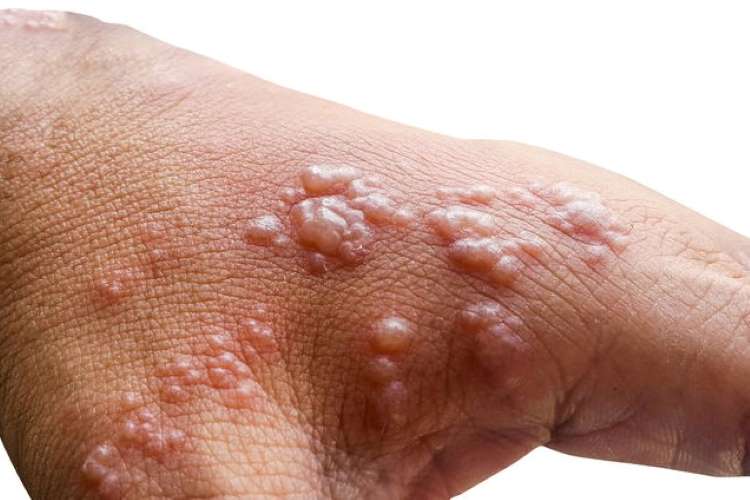Even as the world isn’t past the coronavirus pandemic yet, Monkeypox has started to engulf countries worldwide, bringing fresh concerns regarding another looming pandemic. The World Health Organisation has declared monkeypox a public health emergency of international concern as the disease is now present across 75 countries. New Delhi has also reported its first case, taking the total number of cases in the country to four. What has been troubling the authorities is the fact that the patient has no history of international travel, unlike the other three cases in Kerala. This suggests that the infection is already here and is spreading.
The number of cases has been skyrocketing and have grown five times within a month. On July 20, the worldwide tally stood at 17,000. However, unlike the coronavirus which claimed millions of lives, the number of recorded deaths because of monkeypox are only five as it is both less infectious and less lethal compared with Covid. But that is no solace to the medical community. The timing of the spread is a major cause of concern.
ALSO READ: Explained: Why the UK India FTA is important
The monkeypox scare
While monkeypox isn’t a deadly disease, it has been flagged as a global health emergency. Firstly, the WHO acknowledged that the virus has spread to non-endemic countries, i.e., the countries which haven’t witnessed an outbreak before. The spread has also checked three criteria for declaring a public health emergency of international concern.
Since there is no cure available for the disease and knowledge of the disease falls in evolving criteria, also poses a reason for concern. The WHO chief Dr Tedros Adhanom Ghebreyesus on Saturday said that scientific principles, evidence and other relevant information are currently insufficient on the matter and that leaves us with many unknowns. The disease also poses risk of disruption to international traffic even as the effects of the coronavirus pandemic are yet to subside.
What is monkeypox?
Monkeypox is not a new virus unlike coronavirus and the disease was first documented in research monkeys in 1958. However, monkeys have very little to do with how the virus spreads. They neither carry it nor transmit it to humans.
The monkeypox virus belongs to the same subset of a family of viruses called Orthopoxvirus, which also includes smallpox and cowpox. African rodents are suspected to be the main carriers of the virus.
The first human case was recorded in 1970 in the Democratic Republic of Congo. The disease is typically found in central and western African countries and the majority of infections have been in the Democratic Republic of Congo. Experts are of the opinion that ultimately this will be the largest outbreak of monkeypox outside of the endemic areas in Africa.
ALSO READ: Indian economy’s resilience offer hope amid worries of a global recession
The symptoms and effects of the disease are milder than smallpox. Once the virus enters the body, it spreads and replicates via the bloodstream and symptoms appear in 7-14 days. While the monkeypox virus is akin to smallpox, it is far less deadly than the latter, which has a 30% fatality rate. There are two main strains of the disease- one is the West African version which has a death rate of only 1%, while the Central African is more deadly at 10%. But in most cases, people recover within weeks.
In the past, outbreaks were recorded in 2017 with Nigeria reporting the largest outbreak. There have been sporadic outbreaks across 10 African countries, apart from one in the US in 2003.
How does it spread?
Unlike the coronavirus which spreads through air, the good news about monkeypox is that it is not airborne. The spread hence requires close contact with an infected person, animal or a contaminated surface. In the case of humans, the virus spreads through broken skin, lesions or body fluids like saliva. Virus-contaminated surfaces like bedding or clothing can also cause the spread. The other carriers are infected animals. All in all, the spread requires prolonged face to face contact.
Evidence until now also suggests that the outbreak has been concentrated among men who have sex with men. A 16-country study of 528 patients published in the New England Journal of Medicine on Friday had found that 98% of patients were gays or bisexual men.
Symptoms of monkeypox
The initial symptoms of monkeypox are flu-like signs including fever, chills, exhaustion and muscle fatigue. The disease also causes the lymph nodes to swell, which helps differentiate it from smallpox. The same is followed by the spread of a rash across the body, including inside the mouth and on palms and soles of the feet. These rashes can be extremely itchy and painful as they later turn into painful blisters filled with pus. The lesions typically scab over in 14 to 21 days and fall off.
The downside is there is currently no specific drug to cure monkeypox. Most of the available medicines are aimed at alleviating the symptoms of the disease and not curing it. Also, antivirals used to treat smallpox can also be used for monkeypox. While the smallpox vaccine is also known to prevent the spread and is known to be at least 85% effective in protecting against monkeypox, most countries do not have a stockpile of these vaccines since smallpox has mostly been eradicated. The US is an outlier as it maintains a store to protect against possible bioterrorism attacks.
If other countries too amass a stock in the near future, the smallpox vaccine carries its own risks. This includes rare severe side effects, such as inflammation of the heart muscle. That vaccine also may be risky for immuno-suppressed people, including those with undetected HIV infection. People with eczema are also prone to the side effects of the smallpox vaccine.

